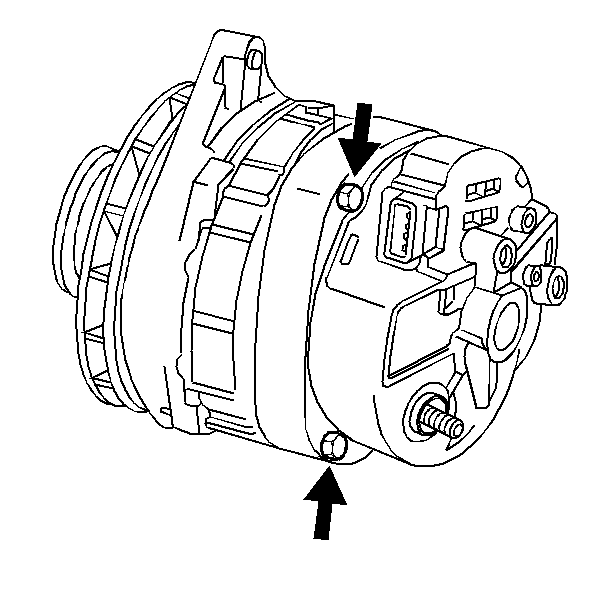These vehicles use two types of generators from the CS series.

| • | CS-130 D |

| • | CS-144 |
The CS stands for charging system and the number indicates the relative size of the generator. The 130 (1) and 144 (2) represent the outside diameter of the stator laminations. The D in the CS-130D indicates the Dual Internal Fan (DIF) design used. These generators feature a built in regulator, delta stators, rectifier bridges, and rotors with slip rings and brushes. Conventional pulleys are used. The CS-130D features two internal fans to cool internal components. The CS-144 has an external fan on the drive end to provide cooling. The CS -130D generator is serviceable by complete replacement only. The CS-144 may be repaired; refer to Generator Disassemble .
The regulator voltage setting varies with temperature, therefore the system voltage setting varies with temperature. The system voltage is limited by controlling rotor field current. By varying the ON-OFF time, correct average field current for proper system voltage control is obtained. At high speeds, the ON-time may be 10 percent and the OFF-time may be 90 percent. At low engine speeds, higher average field current is applied to compensate for slower generator speeds. Since overall ON-OFF switches frequency varies according to electrical needs, when the field current is ON the regulator actually switches the field current off and on at a fixed frequency of 400 cycles per second to aid in control of radio noise. The generator has four terminals; P, L, I, and S. The four terminal connector on the generator is labeled P L, I/F and S, and the matching vehicle wiring harness connector is labeled P, L, F, and S.
The four terminal harness connector may only have one wire and terminal installed. The P (Phase) and I (Ignition) terminals are not used on these vehicles. The L (Lamp) terminal is connected to the instrument cluster and provides a ground to signal the system when voltage is too high, too low, or when the generator is not turning. Voltage in the wiring harness at this terminal will turn on the regulator and allow the generator to function. The current supplied to this terminal must be passed through a proper resistor (such as the indicator light bulb) to prevent damage to the regulator. The S terminal (Optional Voltage Sense) is not used on these vehicles.
In order for the generator to work, the output BAT terminal must be connected to battery positive voltage and the generator housing must be grounded. The battery terminal is connected directly to battery positive and is a live circuit. Refer to
Caution: Unless directed otherwise, the ignition and start switch must be in the OFF or LOCK position, and all electrical loads must be OFF before servicing any electrical component. Disconnect the negative battery cable to prevent an electrical spark should a tool or equipment come in contact with an exposed electrical terminal. Failure to follow these precautions may result in personal injury and/or damage to the vehicle or its components.
in General Information.